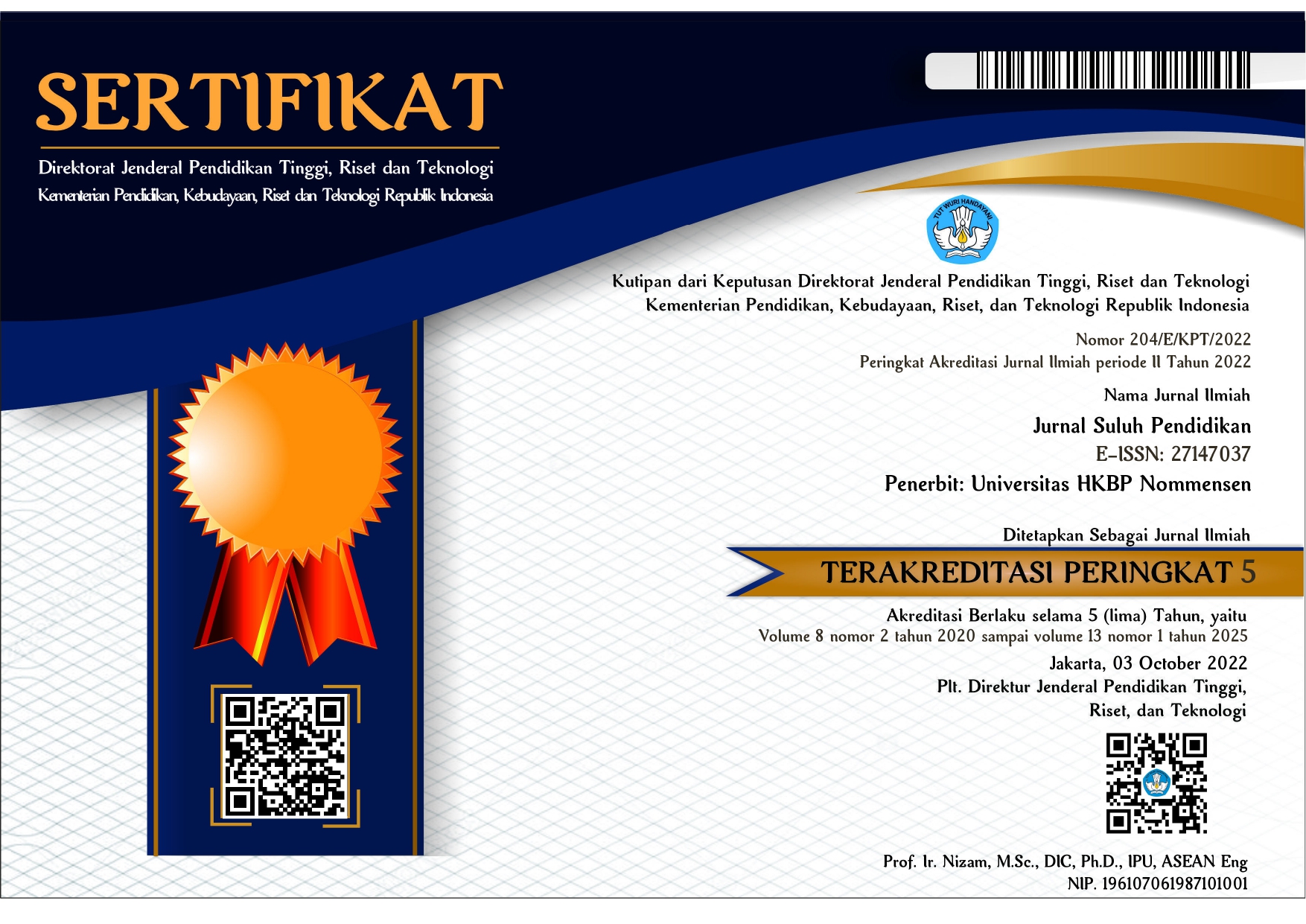IDENTIFIKASI KESULITAN DAN MISKONSEPSI KIMIA UMUM PADA MAHASISWA PENDIDIKAN MATEMATIKA UNIVERSITAS HKBP NOMMENSEN
Abstract
Characteristics of chemical materials are (1) Abstract, (2) Complex and multidisciplinary, (3). Involves analytical arithmetic operations. The transition from high school to university level is a learning process that is quite difficult if it is not accompanied by the right understanding. Understanding the concept of chemical materials obtained from high school, when studied at the university level, different meanings are obtained. This different understanding is what we often call misconceptions. Therefore, to find out the misconceptions that occur in students is a necessity and need for lecturers or teachers, so that they can be used as guidelines and guidance to deal with these misconceptions. This study was conducted to identify the percentage level of difficulty and general chemistry misconceptions for students of mathematics education at the University of HKBP Nommensen, using a random sampling technique. This research was carried out in 5 stages, namely (1). Creating a four-tier test diagnostic instrument; (2) Judgment of instruments by experts; (3) Data collection and interviews (4). Data processing and analysis, (5). Conclusion. Based on the results of data analysis and identification results in this study, the category of student conceptions in the Acid-Base solution material is the percentage of students who experience several categories of conception, namely understanding concepts, understanding partially, misconceptions, not understanding concepts and cannot be coded. The percentage of these categories is as follows; 24% of students fall into the category of understanding concepts, 32% of students fall into the category of partial understanding, 11% of students fall into the category of misconceptions, 30% of students fall into the category of not understanding concepts and 2% of students fall into the category of not being able to code, which means that not all students answered all the questions in the four-tier diagnostic test instrument. There are 2% who did not answer the four-tier diagnostic test.
Hak Cipta:
Penulis yang mempublikasikan manuskripnya di jurnal ini menyetujui ketentuan berikut:
- Hak cipta pada setiap artikel adalah milik penulis.
- Penulis mengakui bahwa Jurnal Suluh Pendidikan (JSP) berhak menjadi yang pertama menerbitkan dengan Creative Commons Attribution 4.0 International License (Attribution 4.0 International (CC BY 4.0)).
- Penulis dapat mengirimkan artikel secara terpisah, mengatur distribusi non-eksklusif manuskrip yang telah diterbitkan dalam jurnal ini ke versi lain (misalnya, dikirim ke repositori institusi penulis, publikasi ke dalam buku, dll.), dengan mengakui bahwa manuskrip telah diterbitkan pertama kali di Jurnal Suluh Pendidikan.




